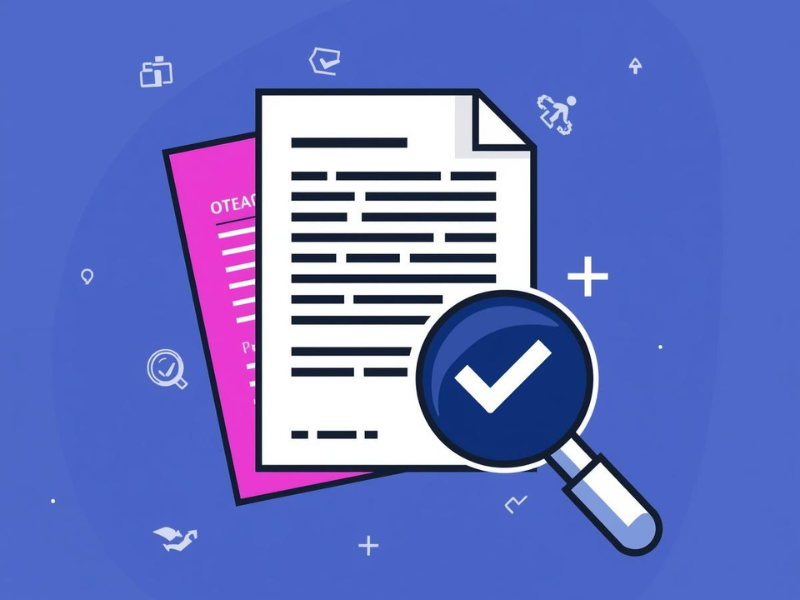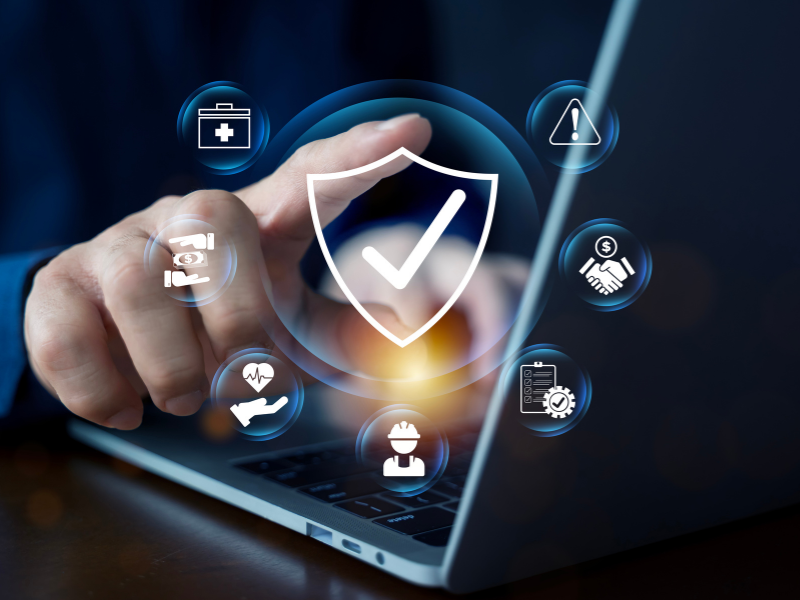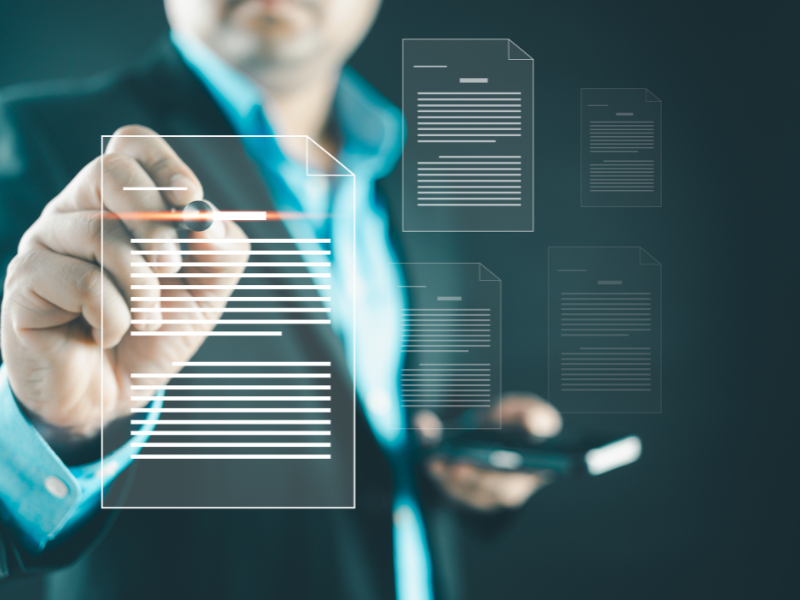Document verification has become one of the most important safeguards in the modern digital economy. Whether onboarding new clients or preventing fraud, verifying the authenticity of submitted documents protects businesses from financial loss and helps maintain regulatory compliance. It also builds the trust that keeps long-term relationships strong.
Key Takeaways
- Document verification is vital for preventing fraud, ensuring compliance, and strengthening trust.
- Modern systems combine manual inspection, automation, biometrics, and database validation.
- AI-based tools increase accuracy and dramatically reduce review time.
- Layered verification and privacy-first design create the most effective results.

What Is Document Verification
Document verification is the process of authenticating both the identity and legitimacy of records such as passports, driver’s licenses, utility bills, and certificates. It confirms that documents were issued by an authorized source, remain unaltered, and belong to the correct individual.
Industries like banking, fintech, healthcare, and real estate rely heavily on it to ensure that customers, patients, and partners are who they claim to be. When verification is handled correctly, businesses can reduce identity theft, eliminate duplicate records, and meet international security obligations.
Why Document Verification Matters
Document verification is not just about checking boxes. It is a frontline defense against fraud and regulatory breaches. Sectors under strict Know Your Customer (KYC) and Anti-Money Laundering (AML) requirements must verify customer identities before delivering services or processing payments.
Effective verification helps organizations:
• Protect against impersonation and data misuse.
• Comply with frameworks such as the GDPR, PCI DSS, and HIPAA.
• Demonstrate accountability in data protection.
• Accelerate onboarding through automated workflows.
Poor verification can lead to fines, investigations, and reputational damage. In a climate where regulators and consumers both expect transparency, secure verification has become a core business competency.
How Document Verification Works
The process has evolved from manual review toward highly automated, technology-driven systems that operate in real time.
- Collection – Documents are submitted through a secure digital portal.
- Capture – High-resolution images are uploaded or scanned. Built-in quality checks prevent glare, blur, or cropping.
- Analysis – Verification software detects authenticity features such as watermarks, microtext, holograms, and signature alignment.
- Cross-validation – Data points are matched against official databases or previous submissions.
- Decision – The result is automatically approved, flagged, or escalated for manual review.
Technologies like optical character recognition (OCR) and machine learning allow these steps to happen within seconds, even across large user volumes.
PrivateID’s document verification enhances this workflow by analyzing images directly on the user’s device. No personal data leaves local storage, and verification completes in about 25 milliseconds. This privacy-preserving approach meets GDPR and CCPA obligations while eliminating delays caused by network transfer.
A Real-World Example
Imagine a fintech company verifying new users during account sign-up. Instead of uploading an ID to the cloud, the PrivateID SDK performs instant on-device checks, confirming document integrity and facial match before data ever leaves the phone. The customer experiences a smooth, one-step onboarding flow, while the business remains fully compliant and reduces operational risk.
Key Methods of Document Verification
Different methods suit different risk levels. Many organizations combine several for a layered defense.
Manual Verification
Experienced agents visually examine documents for inconsistencies, counterfeit patterns, or incorrect typography. This method is reliable for high-risk transactions but slower and more expensive.
Automated Verification
AI-driven platforms scan and evaluate documents automatically, detecting tampering and verifying layout accuracy. Automation brings scalability and consistency for digital operations.
Biometric Comparison
Facial recognition or fingerprint scans confirm that the individual presenting a document is its rightful owner. Integrating biometrics with document verification reduces impersonation and synthetic identity fraud.
Database Cross-Referencing
Details from a document—such as name, date of birth, or ID number—are checked against trusted databases, including government registries or credit bureaus. If the data matches, authenticity is confirmed.
Layered Approach
Combining these methods creates stronger assurance. For example, on-device AI for document scanning, liveness detection for user presence, and secondary database validation can operate together for maximum confidence.

Common Challenges in Document Verification
Even advanced systems face ongoing challenges that require proactive management.
Sophisticated Forgeries – Criminals use digital editing and high-resolution printing to mimic official templates. Staying ahead requires constant algorithm training and cooperation with standards bodies like the Age Check Certification Scheme (ACCS).
Global Variability – Every nation issues documents differently. Systems must recognize thousands of templates across languages, fonts, and security features.
Poor Image Quality – Low-light or cropped uploads lead to unnecessary rejections. Built-in quality detection and user instructions improve success rates.
Privacy and Data Security – Verification tools handle highly sensitive information. Processing documents locally, as PrivateID does, eliminates cloud exposure and simplifies compliance with privacy laws such as the CCPA.
User Friction – Cumbersome verification steps increase abandonment. Clear guidance and instant results keep users engaged.
Addressing these obstacles requires continuous tuning and privacy-first architecture.
Best Practices for Effective Document Verification
To maintain trust and efficiency, verification programs should evolve alongside technology.
- Use Advanced AI and ML – Automate detection of tampering and learn from new threat patterns.
- Update Regularly – Add emerging document formats and adjust algorithms for regional differences.
- Provide Transparent Instructions – Educate users on acceptable image formats and explain rejections.
- Secure User Data – Encrypt end-to-end, restrict retention, and apply privacy-by-design principles.
- Adopt Layered Security – Combine automated verification, biometrics, and manual review for high-risk cases.
- Audit Continuously – Regular audits detect process drift and training gaps.
PrivateID supports this framework through modular components such as liveness detection and identity proofing. Each module runs on-device, delivering sub-second verification while keeping data private.
According to the NIST Digital Identity Guidelines, adopting layered assurance and adaptive risk scoring enhances both user experience and security posture. Aligning internal procedures with such recognized standards also demonstrates accountability to regulators.

Legal and Compliance Considerations
Document verification touches every major privacy and security regulation. GDPR defines how personal data can be stored and processed in the EU, while the U.S. Federal Trade Commission enforces child-protection standards under COPPA.
Solutions that process information locally reduce exposure under these laws. PrivateID’s patented Edge AI ensures that no personally identifiable information leaves the device, avoiding the need for parental consent and simplifying global compliance.
Companies operating internationally should maintain a compliance register that maps each step of their verification process to applicable frameworks. This not only reduces audit friction but also increases consumer trust.
Conclusion
Document verification is the cornerstone of digital identity assurance. It secures transactions, maintains regulatory integrity, and reinforces customer confidence.
By embracing AI automation and privacy-preserving design, organizations can verify documents instantly and securely while meeting global compliance standards. On-device, real-time systems like PrivateID’s redefine efficiency by combining accuracy, privacy, and speed into a single user-centric experience.
Frequently Asked Questions About Document Verification
What is document verification and how does it work?
It authenticates documents through data extraction, visual analysis, and cross-validation with official sources. AI and on-device processing deliver instant results.
Why is document verification important for businesses?
It prevents fraud, supports KYC and AML compliance, and protects reputation. Reliable verification reduces legal and financial risk.
What methods are most common?
Manual review, AI/OCR automation, biometric matching, and database checks. Many organizations use a layered combination for stronger assurance.
What challenges arise in verification?
Counterfeits, varied global formats, poor images, privacy rules, and user friction. Regular updates and privacy-first AI minimize these issues.
How can companies improve their process?
Implement AI-based tools, refresh templates often, communicate clearly, encrypt data, and conduct regular audits.
Is document verification required for remote onboarding?
Yes. It ensures remote identities are authentic and fully compliant with regulations, creating a smooth digital onboarding experience.
